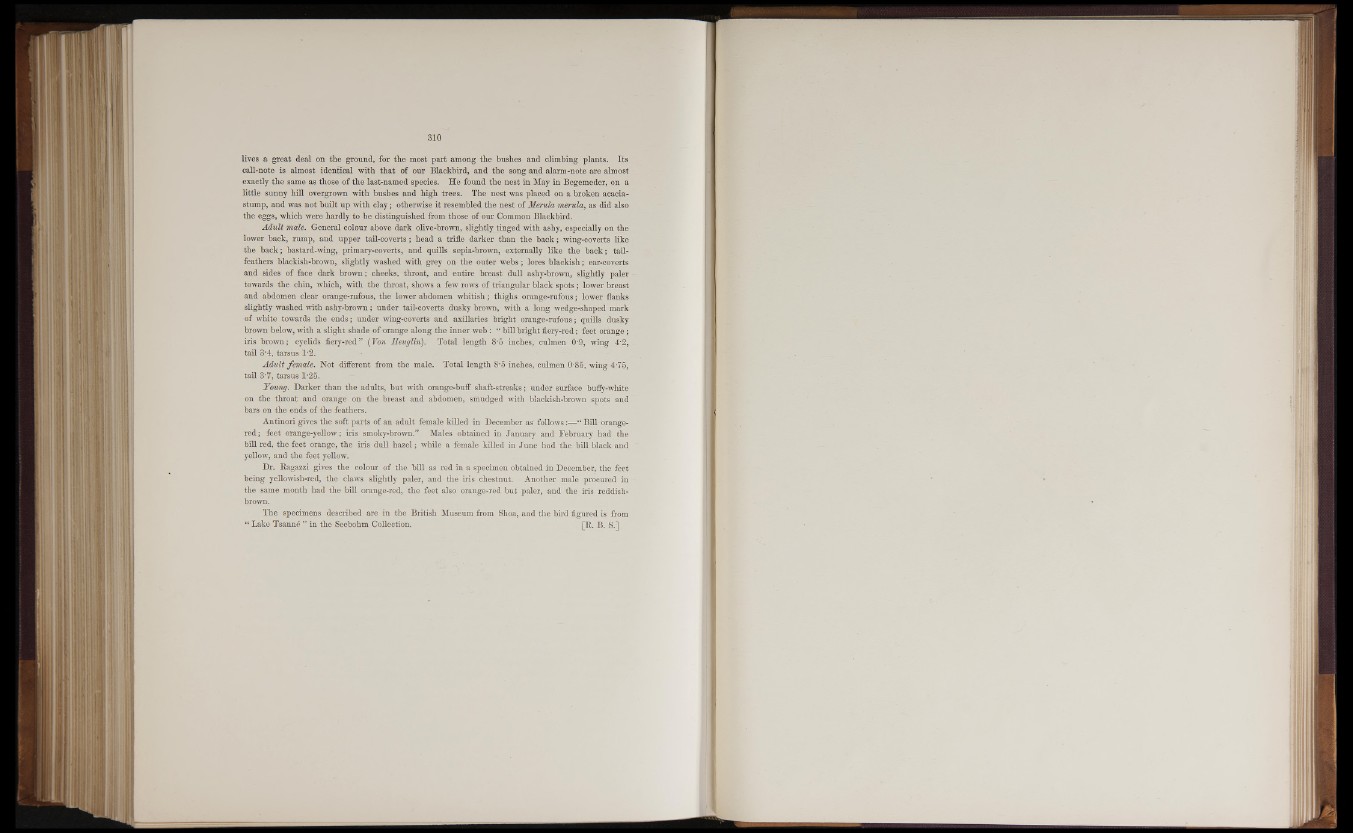
lives a great deal on the ground, for the most part among the bushes and climbing plants. Its
call-note is almost identical with that of our Blackbird, and the song and alarm-note are almost
exactly the same as those of the last-named species. He found the nest in May in Begemeder, on a
little sunny hill overgrown with bushes and high trees. The nest was placed on a broken acacia -
stump, and was not built up with clay; otherwise it resembled the nest of Merida merula, as did also
the eggs, which were hardly to be distinguished from those of our Common Blackbird.
Adult male. General colour above dark olive-brown, slightly tinged with ashy, especially on the
lower back, rump, and upper tail-coverts; head a trifle darker than the back; wing-coverts like
the back; bastard-wing, primary-coverts, and quills sepia-brown, externally like the back; tail-
feathers blackish-brown, slightly washed with grey on the outer webs; lores blackish; ear-coverts
and sides of face dark brown; cheeks, throat, and entire breast dull ashy-brown, slightly paler
towards the chin, which, with the throat, shows a few rows of triangular black spots; lower breast
and abdomen clear orange-rufous, the lower abdomen whitish; thighs orange-rufous; lower flanks
slightly washed with ashy-brown; under tail-coverts dusky brown, with a long wedge-shaped mark
of white towards the ends; under wing-coverts and axillaries bright orange-rufous; quills dusky
brown below, with a slight shade of orange along the inner web: “ bill bright fiery-red; feet orange;
iris brown; eyelids fiery-red” (Von Heuglin). Total length JjJ inches, culmen 0'9, wing 4'2,
tail 3*4, tarsus 1*2.
Adult female. Not different from the male. Total length 8‘5 inches, culmen 0 -85, wing 4‘75,
tail 3-7, tarsus 1*25.
Young. Darker than the adults, but with orange-buff shaft-streaks; under surface buffy-white
on the throat and orange on the breast and abdomen, smudged with blackish-brown spots and
bars on the ends of the feathers.
Antinori gives the soft parts of an adult female killed in December as' follows:—“ Bill orange-
red; feet orange-yellow; iris smoky-brown.” Males obtained in January and February had the
bill red, the feet orange, the iris dull hazel; while a female killed in June had the bill black and
yellow, and the feet yellow.
Dr. Ragazzi gives the colour of the bill as red in a specimen obtained in December, the feet
being yellowish-red, the claws slightly paler, and the iris chestnut. Another male procured in
the same month had the bill orange-red, the feet also orange-red but paler, and the iris reddish-
brown.
The specimens described are in the British Museum from Shoa, and the bird figured is from
“ Lake Tsanne ” in the Seebohm.Collection. [R. B. S.]
m
§111
■ i